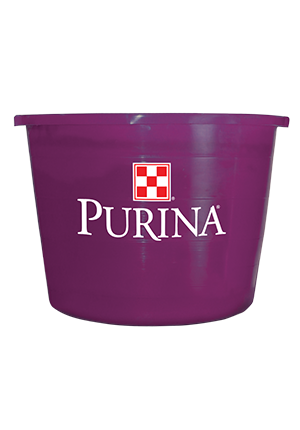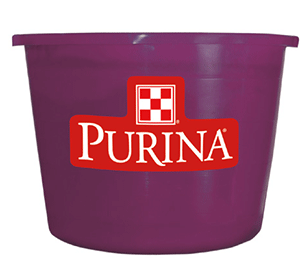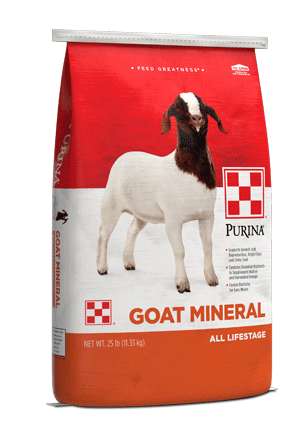
Maximize Revenue Opportunity from Cull Ewes and Does
Wellness : Nutrition
Wellness : Health

The culling of sheep and goats occurs when they are no longer contributing to the profitability of your operation. But cull ewes and does don’t have to be a loss. Efficiently adding weight to cull sheep or goats and identifying the ideal marketing window can help you capture more revenue for your business.
Learn more about the top factors for culling goats and sheep, how to know when to market them and how to feed cull ewes and does to maximize gain.
Learn more about the top factors for culling goats and sheep, how to know when to market them and how to feed cull ewes and does to maximize gain.
When to make sheep and goat culling decisions
There are two key times of year to evaluate culling sheep and goats, especially females, from your herd or flock – after weaning and before breeding. After weaning, assess potential cull ewes and does for productivity and profitability in terms of the number of lambs or kids weaned and the cumulative weaning weight.
Around 45-60 days before breeding season, evaluate how potential cull ewes or does held up during the grazing season. Did any require greater maintenance in terms of parasites, worms or other health challenges? Did they have feet and leg issues? Body condition can be a factor for culling, but under-conditioned ewes and does that are otherwise sound and productive still have time to get back into condition with nutritional support before breeding.
For spring lambing or kidding, late gestation is a good time to review animal records and earmark females that have decreased in productivity over the past few years so you can keep an eye on them.
Around 45-60 days before breeding season, evaluate how potential cull ewes or does held up during the grazing season. Did any require greater maintenance in terms of parasites, worms or other health challenges? Did they have feet and leg issues? Body condition can be a factor for culling, but under-conditioned ewes and does that are otherwise sound and productive still have time to get back into condition with nutritional support before breeding.
For spring lambing or kidding, late gestation is a good time to review animal records and earmark females that have decreased in productivity over the past few years so you can keep an eye on them.
Voluntary and involuntary culling factors
Many factors influence decisions around culling goats and sheep, and you can group these factors into two categories – voluntary and involuntary culling. Involuntary culling of sheep and goats is associated with factors that negatively impact the bottom line regardless of market conditions. Involuntary culling factors are typically associated with reproductive issues (not breeding back) and severe health challenges. Most other factors are considered voluntary culling – factors preventing females from being highly productive but may be overlooked if the profit margins are high in a given market.
As such, voluntary culling factors include:
• Feet and legs
• Assisted or unassisted lambing/kidding
• Mothering ability
• Udder quality
• Number of lambs or kids weaned
• Cumulative weaning weight of lambs or kids
• Body condition
• Age
• Teeth
Producers often ask me at what age to cull ewes or does. The answer depends on the animal. Is she weaning a cumulative lamb or kid weight that ranks in the top half of the flock or herd? Has she remained hardy in terms of feet and legs and udder quality? Age alone isn’t a reason to cull if an animal is productive and weaning an adequate weight of lambs or kids. However, if an older ewe or doe is routinely under-conditioned and has reduced fertility or milk production, it may be time to move her down the road.
As such, voluntary culling factors include:
• Feet and legs
• Assisted or unassisted lambing/kidding
• Mothering ability
• Udder quality
• Number of lambs or kids weaned
• Cumulative weaning weight of lambs or kids
• Body condition
• Age
• Teeth
Producers often ask me at what age to cull ewes or does. The answer depends on the animal. Is she weaning a cumulative lamb or kid weight that ranks in the top half of the flock or herd? Has she remained hardy in terms of feet and legs and udder quality? Age alone isn’t a reason to cull if an animal is productive and weaning an adequate weight of lambs or kids. However, if an older ewe or doe is routinely under-conditioned and has reduced fertility or milk production, it may be time to move her down the road.
Evaluating market opportunity
Once you’ve decided which animals to cull, consider if you should cull immediately or keep them in the flock for a time to maximize market opportunities . The decision is twofold:
1. What are the expected feed costs to add weight to cull animals before marketing?
2. Will the expected return on investment outweigh any additional input costs?
Deciding when to cull ewes or does is about comparing the opportunity cost of time on feed and market opportunity. You don’t have a crystal ball to know what market prices will be, but you can look at seasonality of historical cull ewe prices to make an informed decision.
Also consider the environmental conditions and time of year. For example, it might not make sense to devote extra feed resources to cull ewes and does when experiencing drought conditions. The availability of stored forage and grazing resources can greatly influence expected feed costs for cull ewes and does.
1. What are the expected feed costs to add weight to cull animals before marketing?
2. Will the expected return on investment outweigh any additional input costs?
Deciding when to cull ewes or does is about comparing the opportunity cost of time on feed and market opportunity. You don’t have a crystal ball to know what market prices will be, but you can look at seasonality of historical cull ewe prices to make an informed decision.
Also consider the environmental conditions and time of year. For example, it might not make sense to devote extra feed resources to cull ewes and does when experiencing drought conditions. The availability of stored forage and grazing resources can greatly influence expected feed costs for cull ewes and does.
Feeding cull ewes and does
If you decide to feed out females before marketing, I recommend treating them like incoming feedlot animals and, at a minimum, getting them up to date on vaccinations and deworming. Then, work them up to a feedlot-style diet for 60-90 days before marketing to maximize weight gain. However, be sure to evaluate for broken-mouthed ewes or does prior to initiation of the feeding program as the diet may need to be constructed to ensure they can be truly efficient on grain-focused ration.
Roughage is still essential in the diet, but, to maximize efficiency, it’s important to feed a higher level of energy to cull ewes and does than replacement females or females remaining in the breeding program. Determining how much to feed cull ewes and does will depend on current grain prices and what forage resources you have available. Self-fed products with a high fat level can also be a great option to supplement forages and help quickly add weight to cull ewes and does.
Re-asses cull ewes and does about 30 days after they’ve been on feed. If they haven’t gained weight, consider marketing them to focus resources on females that are responding to added time on feed.
Finding just the right balance of feed investment and marketing opportunity can help you capitalize on cull ewes and does and bring additional revenue back to your business.
Find a dealer here.
Roughage is still essential in the diet, but, to maximize efficiency, it’s important to feed a higher level of energy to cull ewes and does than replacement females or females remaining in the breeding program. Determining how much to feed cull ewes and does will depend on current grain prices and what forage resources you have available. Self-fed products with a high fat level can also be a great option to supplement forages and help quickly add weight to cull ewes and does.
Re-asses cull ewes and does about 30 days after they’ve been on feed. If they haven’t gained weight, consider marketing them to focus resources on females that are responding to added time on feed.
Finding just the right balance of feed investment and marketing opportunity can help you capitalize on cull ewes and does and bring additional revenue back to your business.
Find a dealer here.



